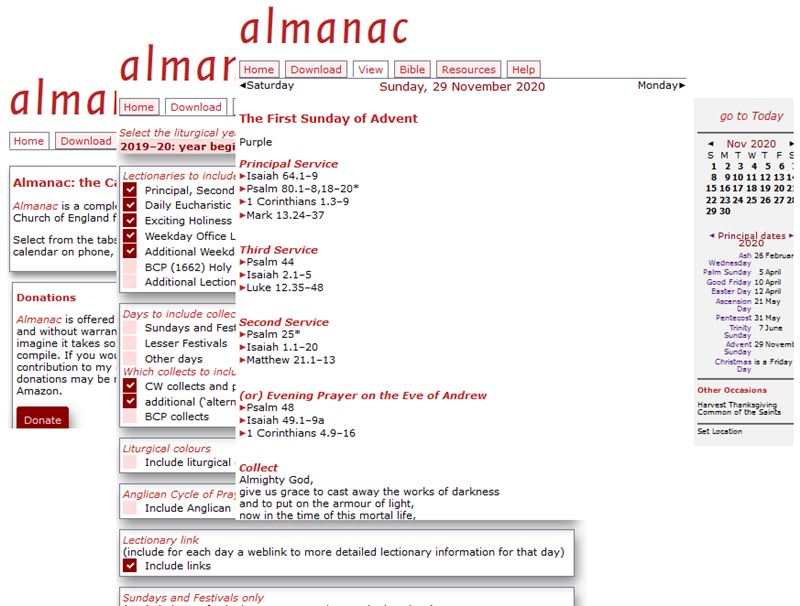Liturgy at the Funeral of Queen Elizabeth II
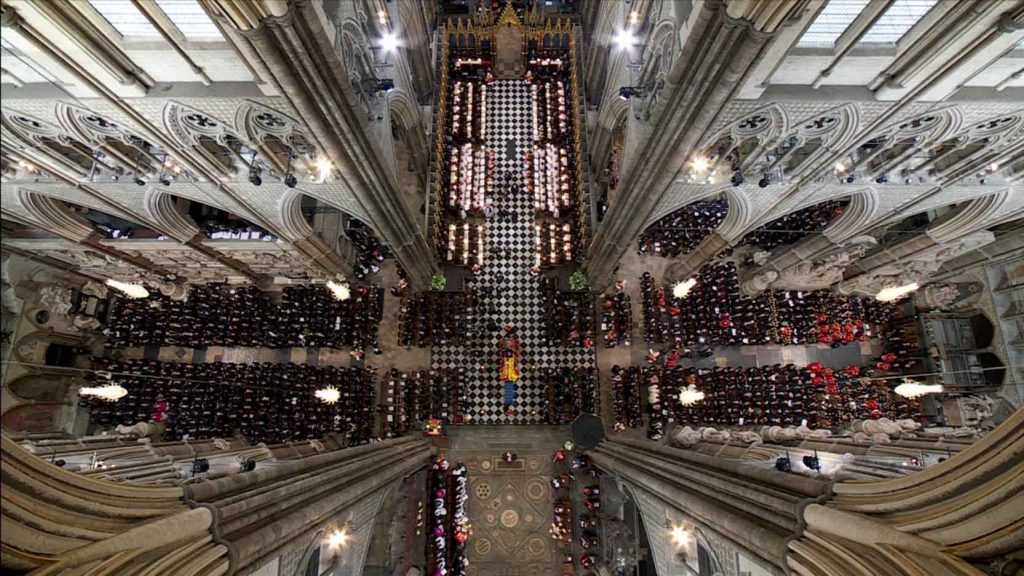 The death of the head of state of a country is a significant event, even more so when that person has been head of state for 70 years, and is head of state of more than one country. The death of Queen Elizabeth II, guaranteed to come at some point, was nonetheless an event that touched many people, and millions if not billions of people around the world mourned her in some way.
The death of the head of state of a country is a significant event, even more so when that person has been head of state for 70 years, and is head of state of more than one country. The death of Queen Elizabeth II, guaranteed to come at some point, was nonetheless an event that touched many people, and millions if not billions of people around the world mourned her in some way.
For the first time, Orders of Service for the funeral at Westminster Abbey, and the Committal at St George’s Chapel, Windsor, were published online, enabling those watching on television to follow the text and join in if they desired.
For future reference, copies of these Orders of Service are attached to this post:
0 CommentsStations of the Cross
Stations of the Cross is a traditional devotion for Lent, and especially for Holy Week. It originated in Jersualem, where pilgrims would literally walk along the route from the centre of the city to the traditional place of Christ’s execution, stopping en route to recall various incidents recorded in the gospels, or elsewhere in the tradition. The number and names of the stations were later codified at fourteen (to which a fifteenth station of the Resurrection was added in more recent times). Many sets of words and prayers have been written to acccompany the walk. I compiled this particular set for an ecumenical service in my home parish, and subsequently published them on the Thinking Anglicans blog. It envisages a scenario in which some of those who participated in or witnessed the original events are gathered to remember what happened on that day.
- Pilate condemns Jesus to death
- Jesus takes up his cross
- Jesus falls the first time
- Jesus meets his mother
- Simon helps Jesus carry the cross
- Veronica wipes the face of Jesus
- Jesus falls the second time
- Jesus speaks to the women of Jerusalem
- Jesus falls the third time
- Jesus is stripped of his garments
- Jesus is nailed to the cross
- Jesus dies on the cross
- Jesus is taken down from the cross
- Jesus is placed in the tomb
- Jesus is risen
Common Worship Almanac for 2021-22
My Almanac for the liturgical year 2021–22, the year beginning Advent Sunday 2021 is now available. The Almanac is a complete and customizable download that can be added to the calendar on a desktop/laptop, a tablet or a smartphone providing a fully-worked out calendar and lectionary according to the rules of the Church of England. Several download formats are provided, giving access to most calendar software on most devices.
As before, download is free, and donations are invited.
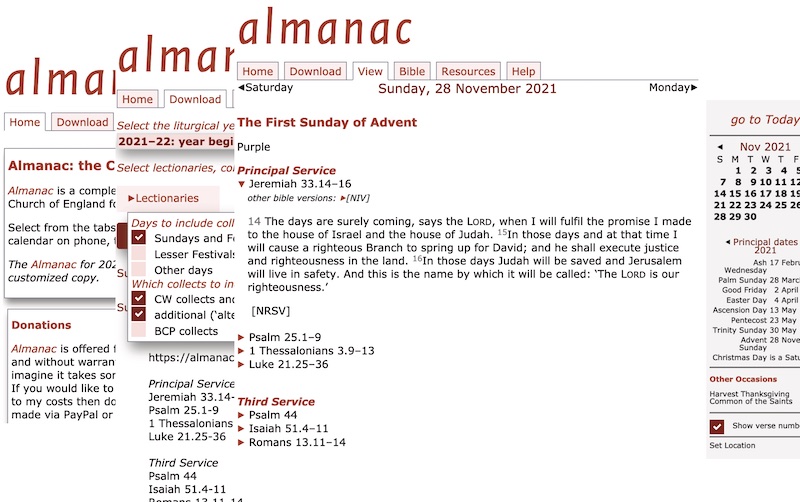
What's new?
The Almanac is also available as a web page that can be installed as a web app on smartphones and tablets for easy access to all the data. New features include
- the Download tab now shows a live preview of the data that will be added to your calendar; as you select options from the menus the live preview automatically reflects your choices
- in the View tab you can toggle the display of verse numbers in the readings, making it simpler to copy and paste passages to other documents in the desired format
- in the View tab the bible readings now have an additional link to the NIV text at Bible Gateway, as well as displaying the NRSV text (or the Common Worship psalter for psalms)
- a new shorter format for subscription links (old-style links continue to work as well)
Donations
This Almanac is offered free of charge, and without warranty, but as you might imagine it takes some effort to compile. If you would like to make a contribution to my costs then donations may be made via PayPal at paypal.me/simonkershaw. Alternatively, Amazon gift vouchers can be purchased online at Amazon (amazon.co.uk) for delivery by email to simon@kershaw.org.uk .
The Almanac has been freely available for over 20 years. There is not and has never been any charge for downloading and using the Almanac — this is just an opportunity to make a donation, if you so wish. Many thanks to those of you who have donated in the past or will do so this year, particularly those who regularly make a donation: your generosity is appreciated and makes the Almanac possible.
0 CommentsAn act of iconoclasm
There’s lots of talk at the moment of toppling statues and removing items commemorating historical figures with what is now seen as a dubious past. Here is a little story that has never been told before.
In June 1980, 41 years ago, I was an undergraduate at Wadham College, right at the end of my three years at Oxford. I lived in a room in a small courtyard on top of the then-new college library. The library, opened three years earlier, had been significantly funded by a donation from the Iranian imperial family, and was named after the twin sister of the Shah, Princess Ashraf Pahlavi, and there was a plaque commemorating this dedication over the inside of the main entrance. The funding and the dedication had been fiercely criticised by the student body and others, and a number of protests took place while I was at the college. In February 1979 the Shah had been overthrown and had gone into exile, as had his sister, but the library dedication remained, and so did the plaque.
Although not to everyone’s architectural taste, I liked the new library building (by Glasgow architect Andy MacMillan of Gillespie, Kidd and Coia), and knew every public corner of it. There were also parts that were out of bounds to undergraduates, and eventually I discovered that at the dead of night when there was no one else around then you could venture unchallenged through any “no entry” signs or unlocked doors. In particular, there was a spiral staircase leading from the downstairs reading lounge up to the limited-access Persian section. The Persian section had another access door from the floor on which it was, but my recollection is that that door was normally locked.
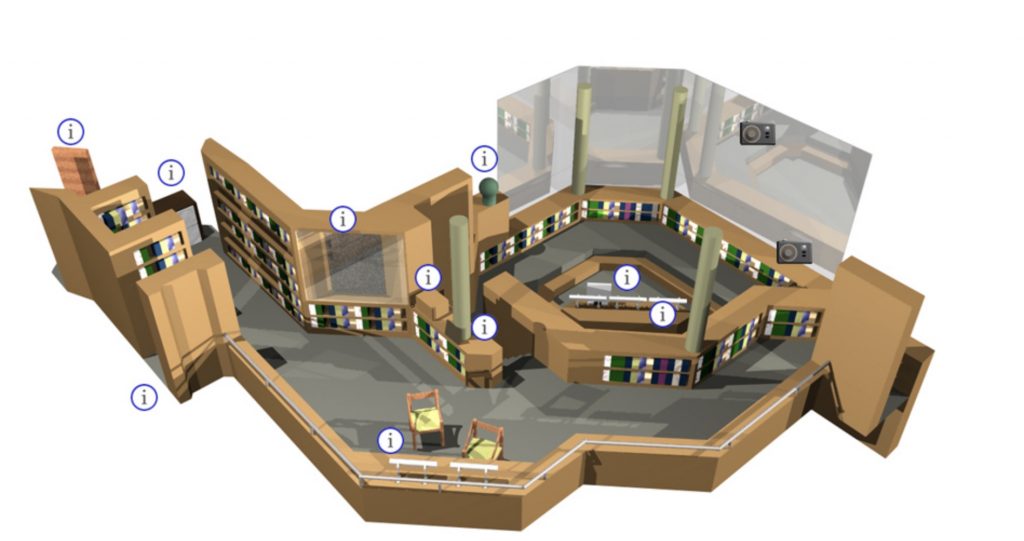
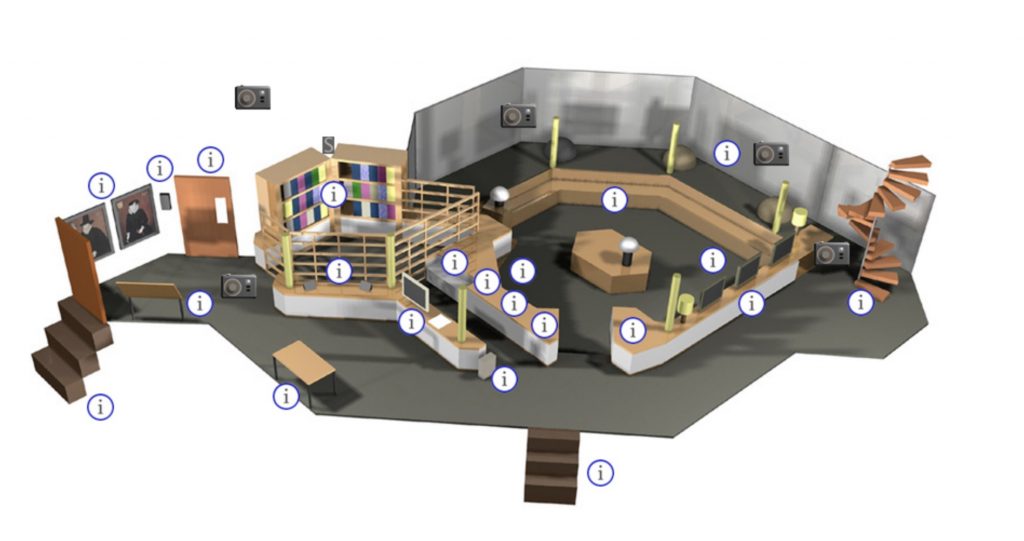
It was during one of these night-time explorations that I discovered (as you do) that the Pahlavi plaque over the main door was very simply fixed to the library wall, with just a couple of keyhole slots on the back that fitted over some screws in the library wall.
And so an idea formed in my mind, as I was nearing finals that June. Wouldn’t it be fun, I thought, to remove the plaque? But how to dispose of it? The idea sat in my head for a few weeks as I revised and sat my finals. Many subjects held their finals early in the summer term, but for my subject, physics, finals were right at the end of term, and afterwards nearly all undergraduates left Oxford. I had already arranged to stay in college for a few more days.
One night after the end of term, when all was quiet, I went downstairs from my room into the library. I walked all round to be sure that there was no one else in the library, and I checked the place where I had thought of putting the plaque. All was deserted. Back at the entrance I reached up and gently lifted the plaque from off the wall over the door. It was about 3 feet or so long, 10 inches high and perhaps an inch or two deep, solid oak and moderately heavy. Across the library and up the spiral staircase, and I was into the closed Persian section. The bookcases here were tall, over 6 feet, and I carefully placed the plaque on top of one, where it could not be seen from below, and where it was not possible to look down from above. Or, and here my memory is a little hazy after all these years, did I come out of the Persian section and into the upper level of the library and place it on top of a bookcase there? Either way, it would not be found accidentally.
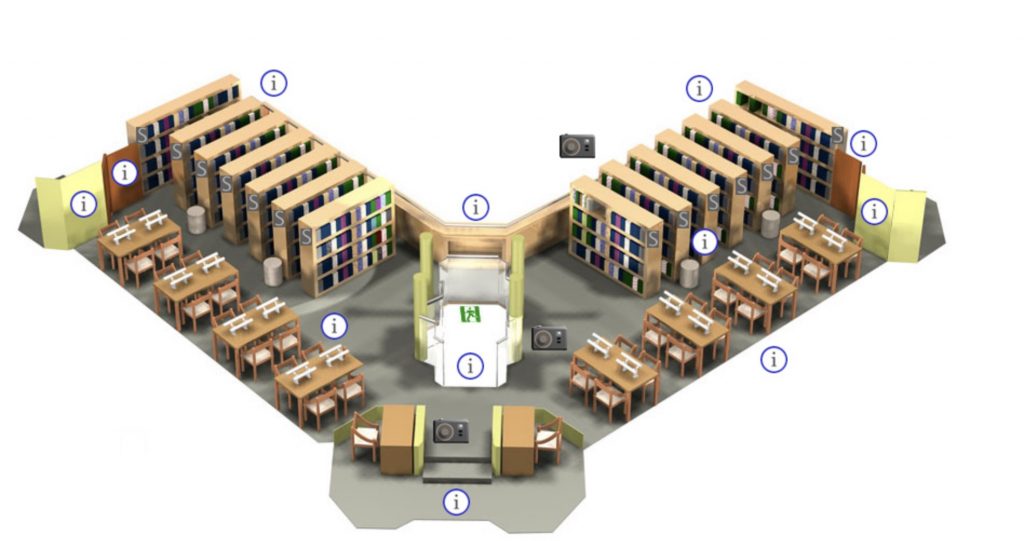
Was it a protest at the Iranian regime, or a student prank? A little bit of both I suppose. I had thought of putting a sign in its place with words such as “the Ayatollah Khomeini Library” – that would certainly have made it a prank in my eyes, but I didn’t carry through with that.
It was a couple of months later, in mid-September, during the long summer vac, and before I started my first job, that I returned to Oxford for a few days. Wandering round the college I bumped into the chaplain (Peter Allan, later a monk at Mirfield) and we arranged to have lunch the next day, at the Trout at Wolvercote, if I recall correctly, or was it the Perch at Binsey? “Did you hear,” he asked me, “that someone had removed the Pahlavi plaque from the library, and it had disappeared?” “And what,” I said as innocently as I could, “is the college doing about it?” “They’re just relieved that they don’t have to decide what to do with it,” he replied. So much, I thought, for my little act of rebellion. But I stayed silent. And I have stayed silent until today.
I’ve never heard whether the plaque was found, though some time later I left a note in the library saying where I had put it. Several years later the library was renamed the Ferdowsi Library after the Persian poet Abul-Qâsem Ferdowsi Tusi (c.940‑1020), a much less divisive figure.
This diagrammatic view of the library shows how the different levels interact (and the default view shows the entrance door, over which the plaque was sited, and the spiral staircase up to the Persian section)
https://weblearn.ox.ac.uk/…/virtualtour/mezzanine.html
These pictures show the exterior and inside of the library, and apart from the presence of computers, it was pretty much the same in 1980.
https://www.wadham.ox.ac.uk/…/a‑day-in-the-life-of…
Two further links
https://en.wikipedia.org/wiki/Andy_MacMillan
https://en.wikipedia.org/wiki/Ashraf_Pahlavi
Little Gidding Pilgrimage 2020
Each year the Friends of Little Gidding, of which I am the Chair, organizes a Pilgrimage to Little Gidding. For the last few years this has taken the form of a walk from Leighton Bromswold to Little Gidding, with stops (or ‘stations’) for short reflections along the way. The day begins with a celebration of the Eucharist at Leighton Bromswold, and ends with Evensong at Little Gidding followed by Tea.
The events of 2020 made this format impossible, and instead we held an online event with a number of pre-recorded segments and some ‘live’ readings and prayers, as well as a little interaction between those taking part. Follow me as I walk from Leighton Bromswold to Little Gidding, introducing the various stopping points, and talking about the Ferrars’ experience of the devastating plague that hit London in 1625, and that forced them to leave the City and move to Little Gidding, while Fiona Brampton, Chaplain at Little Gidding, reflects on the impact of COVID-19 on us today.
Footage of me and video editing by Alexander Kershaw. Footage of Fiona filmed on my iPhone, and edited into the video by me, along with ‘live’ readings and prayers recorded via Zoom.
0 Comments2020-21 Almanac for Common Worship and BCP
Now available for the year beginning Advent Sunday 2020: Almanac, the calendar, lectionary and collects according to the calendar of the Church of England, for Common Worship and for the Book of Common Prayer. Download to your calendar or use the web app.
Download is free, donations are invited.
What's new?
The Almanac web page has been comprehensively updated since last year to make it easier and more useful. Updates include
- the download page and the daily view have been integrated into a single tabbed page
- the oremus Bible Browser (which includes the full NRSV, the AV, and the psalters from the prayer book and Common Worship) is added on another tab
- a resources tab provides direct links to all the official Common Worship texts, hymn suggestions (with links through to HymnQuest) and some other liturgical resources
- the Almanac daily view includes sunrise and sunset times, which can be customized to your location
- on phones and tablets you can add an Almanac icon or tile to your screen so that it is accessible like an app (details in the Help tab), and you can swipe forwards and backwards through the days, and through bible passages in the Bible tab
As usual, the Almanac is available in a number of formats for adding to Microsoft Outlook, Apple Calendar, iPhone or iPad, Google Calendar and other calendar applications. It can be synced from a desktop calendar to a tablet or smartphone (including Apple iPads and iPhones, Android phones and tablets, and Windows Surface tablets). There is also a csv format, which can be opened in a spreadsheet for further manipulation.
Naturally I hope that the Almanac is free of errors, but I disclaim responsibility for the effects of any errors. My liability is limited to providing a corrected file for import, at my own convenience. Please help by notifying me of possible errors.
Donations
This Almanac is offered free of charge, and without warranty, but as you might imagine it takes some effort to compile. If you would like to make a contribution to my costs then donations may be made via PayPal at paypal.me/simonkershaw. Alternatively, Amazon gift vouchers can be purchased online at Amazon (amazon.co.uk) for delivery by email to simon@kershaw.org.uk .
The Almanac web page carries the date 8 September 2000, so, as the Beatles sang, “it was twenty years ago” that I first provided a digital liturgical calendar, which in a couple of years evolved into a fully worked-out lectionary. There is not and has never been any charge for downloading and using the Almanac — this is just an opportunity to make a donation, if you so wish. Many thanks to those of you who have donated in the past or will do so this year, particularly those who regularly make a donation: your generosity is appreciated and makes the Almanac possible.
1 Comment
Are individual cups legal for communion?
Since March, the Church of England guidance issued by the bishops has stipulated that communion should be received “in one kind” only, and that the chalice, the common cup, should be withheld from all except the priest taking the service. This has been backed by legal advice that a single cup must be used, and if it is impossible to share a common cup, then the cup should be withheld.
Now a group of barristers has challenged this legal advice that it is unlawful to use separate individual cups, issuing a contrary legal opinion that the overriding priority is that communion should be administered in both kinds, and that this should allow individual cups to be used.
The Church Times reports on this story here.
0 CommentsHeraldic Glass at Little Gidding
Little Gidding is a place with which I have a long association. It gave its name to TS Eliot’s last great poem and before that in the early 17th century Nicholas Ferrar and his extended family lived there in a household of prayer and work. Eliot famously described the tiny church at Little Gidding as a place where prayer has been valid, and hundreds of visitors and pilgrims come each year to experience the beauty and holiness of this quiet and peaceful place. Karen and I first visited Little Gidding when we moved to the area in 1986 and I’ve been Chair of the Friends of Little Gidding for the last decade. Another of my long-term interests is heraldry, which first drew my attention as a child at the end of the 1960s, and I have belonged to the Heraldry Society since 1974.
These two long-term interests come together in the windows of Little Gidding Church, which display the heraldry of Nicholas Ferrar, King Charles I, John Williams Bishop of Lincoln, and William Hopkinson, the 19th century landlord who restored the church. In an article on the website of the Friends of Little Gidding I describe the four windows and also investigate the coat of arms granted to Nicholas Ferrar’s father, Nicholas senior, and how this differs from the arms depicted in the window.
0 CommentsWhat happens next?

At around 2pm on Tuesday 30 January 1649, following a show trial and conviction, King Charles I was executed. It is said that a great moan “as I never heard before and desire I may never hear again” arose from the crowd assembled in Whitehall, and the event sent shockwaves around the country and across Europe. It was the most disruptive event seen in the country, certainly since Henry Tudor had defeated Richard III at the Battle of Bosworth to bring a final end to the Wars of the Roses. King Charles had not perhaps been a great king, and his record as ruler is not unblemished: his misfortunes at least partly he had brought upon himself by his stubborness, and by his view of his role as king by divine right.
And today, 31 January 2020, we see another disruptive event. At 11pm this country will formally leave the European Union, bringing to an end the legal relationship that began nearly 50 years ago on 1 January 1973. It is an event that over the last few years has divided the country, divided families and friends in a way rarely seen. It would have been hard to predict, even five years ago, what would come to pass, and what a bitter turn our political system and political dialogue would take. But whatever misgivings many of us will feel, the legislation is in place, and the deed will happen later today. For many this is a sad and bitter day: the European project in which we have participated for half a century was forged in the aftermath of the Second World War. It originated in treaties that tied the former warring countries, led by France and Germany, into trade deals that made them more and more dependent on each other, and therefore so much less likely to go to war again. In the previous 100 years, France and Germany had been at war three times, Paris had twice been occupied by Germany, and Alsace-Lorraine had changed country four times. Alsace-Lorraine and its city of Strasbourg were a key coal and steel producing region, and the EU began as a “coal and steel community”. For 60 years or more the EU and its predecessors have played an important part in ensuring that there was not another war in western Europe – whilst the trans-Atlantic NATO alliance helped prevent war with the Soviet Union and its eastern European satellite states. The EU has also played its part in ensuring that our ideals of democracy and equality before the law, of freedom from state oppression and so on have prospered within its member countries. Greece, Portugal and Spain, all formerly under the rule of right-wing or military dictatorships, were the first to benefit from this, their fledgling democracies joining the Community in the 1980s. And after the fall of the Soviet Union the countries of eastern Europe queued up to join the Union, keen for both the economic benefits and the support for democracy and rule of law. These benefits have not come for free. The EU and its predecessors have funded the development of poorer parts of Europe, helping to remove the social problems that led to political problems. That has meant that the richer, more stable countries, such as our own, as well as France and Germany and the richer north-western fringe have seen a net outflow of money, of tax revenue. That is perhaps the price of peace, and is considerably cheaper both financially and in terms of human lives than war would have been. But overall there has been a longer period of peace between these countries than at any time in the past, and a greater and prolonged period of economic prosperity, despite various hiccups along the way.
So what happens next?
We know what happened after the execution of Charles I.
In the immediate aftermath, Parliament, led by Cromwell, refused to allow the proclamation of the Prince of Wales as King Charles II, and instead declared the abolition of the monarchy. A republican form of government, the “Commonwealth”, was put in place, the House of Lords abolished, and bishops removed. The rump of the Long Parliament (which had engineered the king’s trial and execution) continued to sit. That Parliament had been elected in 1640, before the Civil War, though at the end of 1648 the Army, led by Colonel Pride, had expelled those members that did not support the Army. In 1653, Cromwell ejected this Rump Parliament and the country essentially became a kind of military dictatorship, with Oliver Cromwell, the leader of the Army, as the strongman.
In 1659, after Oliver Cromwell had died, there was finally a reaction. The Long Parliament was restored, and it called for a return to monarchy. After a period of negotiation, in May 1660 the eldest son of Charles I returned to England from exile in the Netherlands, and was proclaimed and crowned as King Charles II. The restored monarchy was not quite the same as that which had been abolished in 1649, and Charles II understood the limits within which he ruled. It had taken 11 years from the execution of his father until the Restoration, and many of those years must have been dark and difficult for the exiled prince, and dark and difficult for his supporters back in Britain. But eventually they prevailed, and the republican Commonwealth was consigned to history, a mere footnote in the list of Kings and Queens.
Will something similar happen? Will there be a period in which this country gradually comes to see that it has made an enormous mistake, leading eventually to a reassessment of our position, and finally a significant majority to want to rejoin the European Union? That is my hope and expectation. Maybe it will take a decade or more, just as it took a decade or so for the monarchy to be restored in 1660. It does take time to make such a major change in political direction, and right now we are moving on the opposite course.
But the dark day of 30 January 1649 held the promise of restoration. And this dark day too, 31 January 2020, holds that promise also.
Remember!
2 CommentsThe Structure of Lancashire and Bristol Surprise Major
An earlier post described the structure of Bristol Surprise Major in terms of either treble bobbing with the treble, or plain hunting right and wrong without the treble. Lancashire Surprise Major is built on the same principles, the primary difference being that plain hunting right and wrong are done the other way round. Additionally, in Lancashire a bell makes 2nd place at the lead end, and the bells in 3–4 continue dodging with each other (and at the half lead a bell makes 7th place under the treble, while the bells in 5–6 continue dodging with each other).
We can show the two methods alongside each other, like this:
| 1 | 2 | 3 | 4 | 5 | 6 | 7 | 8 | b | 1 | 2 | 3 | 4 | 5 | 6 | 7 | 8 | ||||||||
| Bristol | Lancashire | |||||||||||||||||||||||
| - | 1 | - | - | - | - | - | - | h | - | 1 | - | - | - | - | - | - | ||||||||
| 1 | - | - | - | - | - | - | - | b | 1 | - | - | - | - | - | - | - | ||||||||
| - | 1 | - | - | - | - | - | - | h | - | 1 | - | - | - | - | - | - | ||||||||
| - | ||||||||||||||||||||||||
| - | - | 1 | - | - | - | - | - | b | - | - | 1 | - | - | - | - | - | ||||||||
| - | - | - | 1 | - | - | - | - | h | - | - | - | 1 | - | - | - | - | ||||||||
| - | - | 1 | - | - | - | - | - | b | - | - | 1 | - | - | - | - | - | ||||||||
| - | - | - | 1 | - | - | - | - | h | - | - | - | 1 | - | - | - | - | ||||||||
| - | ||||||||||||||||||||||||
| 7 dodges down with treble in 5–6; | - | - | - | 5 | 1 | 7 | 8 | 6 | b | - | - | - | - | 1 | 7 | 8 | 6 | |||||||
| 8 & 6 dodge at the back | - | - | - | - | 7 | 1 | 6 | 8 | h | - | - | - | - | 7 | 1 | 6 | 8 | |||||||
| - | - | - | - | 1 | 7 | 8 | 6 | b | - | - | - | - | 1 | 7 | 8 | 6 | ||||||||
| - | - | - | - | 7 | 1 | 6 | 8 | h | - | - | - | - | 7 | 1 | 6 | 8 | ||||||||
| - | ||||||||||||||||||||||||
| 8 dodges down with the treble in 7–8; | - | - | - | 7 | 6 | 1 | 8 | b | - | - | - | - | 7 | 6 | 1 | 8 | ||||||||
| 7 & 6 dodge in 5–6 | - | - | - | - | 6 | 7 | 8 | 1 | h | - | - | - | - | 6 | 7 | 8 | 1 | |||||||
| - | - | - | - | 7 | 6 | 1 | 8 | b | - | - | - | - | 7 | 6 | 1 | 8 | ||||||||
| approaching half-lead: bell in 5th place drops down to the front 4; bell in 4th place comes out to the back 4 |
- | - | - | 5 | 6 | 7 | 8 | 1 | h | - | - | - | - | 6 | 7 | 8 | 1 | |||||||
| hl | ||||||||||||||||||||||||
| 7 dodges up with the treble in 7–8; | - | - | - | 6 | 5 | 8 | 7 | 1 | b | - | - | - | - | 7 | 6 | 8 | 1 | treble-bobbing bells change direction | ||||||
| 5 & 8 dodge in 5–6 | - | - | - | - | 8 | 5 | 1 | 7 | h | - | - | - | - | 6 | 7 | 1 | 8 | |||||||
| - | - | - | - | 5 | 8 | 7 | 1 | b | - | - | - | - | 7 | 6 | 8 | 1 | ||||||||
| - | - | - | - | 8 | 5 | 1 | 7 | h | - | - | - | - | 6 | 7 | 1 | 8 | ||||||||
| - | ||||||||||||||||||||||||
| 8 dodges up with the treble in 5–6; | - | - | - | - | 8 | 1 | 5 | 7 | b | - | - | - | - | 6 | 1 | 7 | 8 | |||||||
| 5 & 7 dodge at the back | - | - | - | - | 1 | 8 | 7 | 5 | h | - | - | - | - | 1 | 6 | 8 | 7 | |||||||
| - | - | - | - | 8 | 1 | 5 | 7 | b | - | - | - | - | 6 | 1 | 7 | 8 | ||||||||
| - | - | - | 6 | 1 | 8 | 7 | 5 | h | - | - | - | 4 | 1 | 6 | 8 | 7 | ||||||||
| - | ||||||||||||||||||||||||
| treble goes down; 6 comes up | - | - | - | 1 | 6 | 8 | 5 | 7 | b | - | - | - | 1 | 4 | 6 | 7 | 8 | treble goes down; 4 comes up | ||||||
| back four bells plain hunt wrong | - | - | 1 | - | 6 | 5 | 8 | 7 | h | - | - | 1 | - | 6 | 4 | 8 | 7 | back four bells plain hunt right | ||||||
| (b&h) | - | - | - | 1 | 5 | 6 | 7 | 8 | b | - | - | - | 1 | 6 | 8 | 4 | 7 | (h&b) | ||||||
| - | - | 1 | - | 5 | 7 | 6 | 8 | h | - | - | 1 | - | 8 | 6 | 7 | 4 | ||||||||
| - | ||||||||||||||||||||||||
| back four bells plain hunt right | - | 1 | - | - | 7 | 5 | 8 | 6 | b | - | 1 | - | - | 6 | 8 | 4 | 7 | back four bells plain hunt wrong | ||||||
| (h&b) | 1 | - | - | - | 5 | 7 | 6 | 8 | h | 1 | - | - | - | 6 | 4 | 8 | 7 | (b&h) | ||||||
| - | 1 | - | - | 5 | 6 | 7 | 8 | b | - | 1 | - | - | 4 | 6 | 7 | 8 | ||||||||
| approaching lead end: bell in 5th place drops down to the front 4; bell in 4th place comes out to the back 4 |
1 | - | - | 3 | 6 | 5 | 8 | 7 | h | 1 | - | - | - | 4 | 7 | 6 | 8 | |||||||
| - | ||||||||||||||||||||||||
| lead end | 1 | - | - | 6 | 3 | 8 | 5 | 7 | b | 1 | - | - | - | 7 | 4 | 8 | 6 | |||||||
| le | ||||||||||||||||||||||||
| new place bells for this lead | 5 | 6 | 7 | 8 | 5 | 6 | 7 | 8 | new place bells for this lead | |||||||||||||||
| back four bells plain hunt right | - | 1 | - | - | 6 | 5 | 8 | 7 | h | - | 1 | - | - | 5 | 7 | 6 | 8 | back four bells plain hunt wrong | ||||||
| (h&b) | 1 | - | - | - | 6 | 8 | 5 | 7 | b | 1 | - | - | - | 7 | 5 | 8 | 6 | (b&h) | ||||||
| - | 1 | - | - | 8 | 6 | 7 | 5 | h | - | 1 | - | - | 7 | 8 | 5 | 6 | ||||||||
| - | ||||||||||||||||||||||||
| back four bells plain hunt wrong | - | - | 1 | - | 6 | 8 | 5 | 7 | b | - | - | 1 | - | 8 | 7 | 6 | 5 | back four bells plain hunt right | ||||||
| (b&h) | - | - | - | 1 | 6 | 5 | 8 | 7 | h | - | - | - | 1 | 7 | 8 | 5 | 6 | (h&b) | ||||||
| - | - | 1 | - | 5 | 6 | 7 | 8 | b | - | - | 1 | - | 7 | 5 | 8 | 6 | ||||||||
| - | - | - | 1 | 5 | 7 | 6 | 8 | h | - | - | - | 1 | 5 | 7 | 6 | 8 | ||||||||
| - | ||||||||||||||||||||||||
| 7 dodges down with treble in 5–6; | - | - | - | 5 | 1 | 7 | 8 | 6 | b | - | - | - | 5 | 1 | 7 | 8 | 6 | |||||||
| 8 & 6 dodge at the back | ||||||||||||||||||||||||
0 Comments

